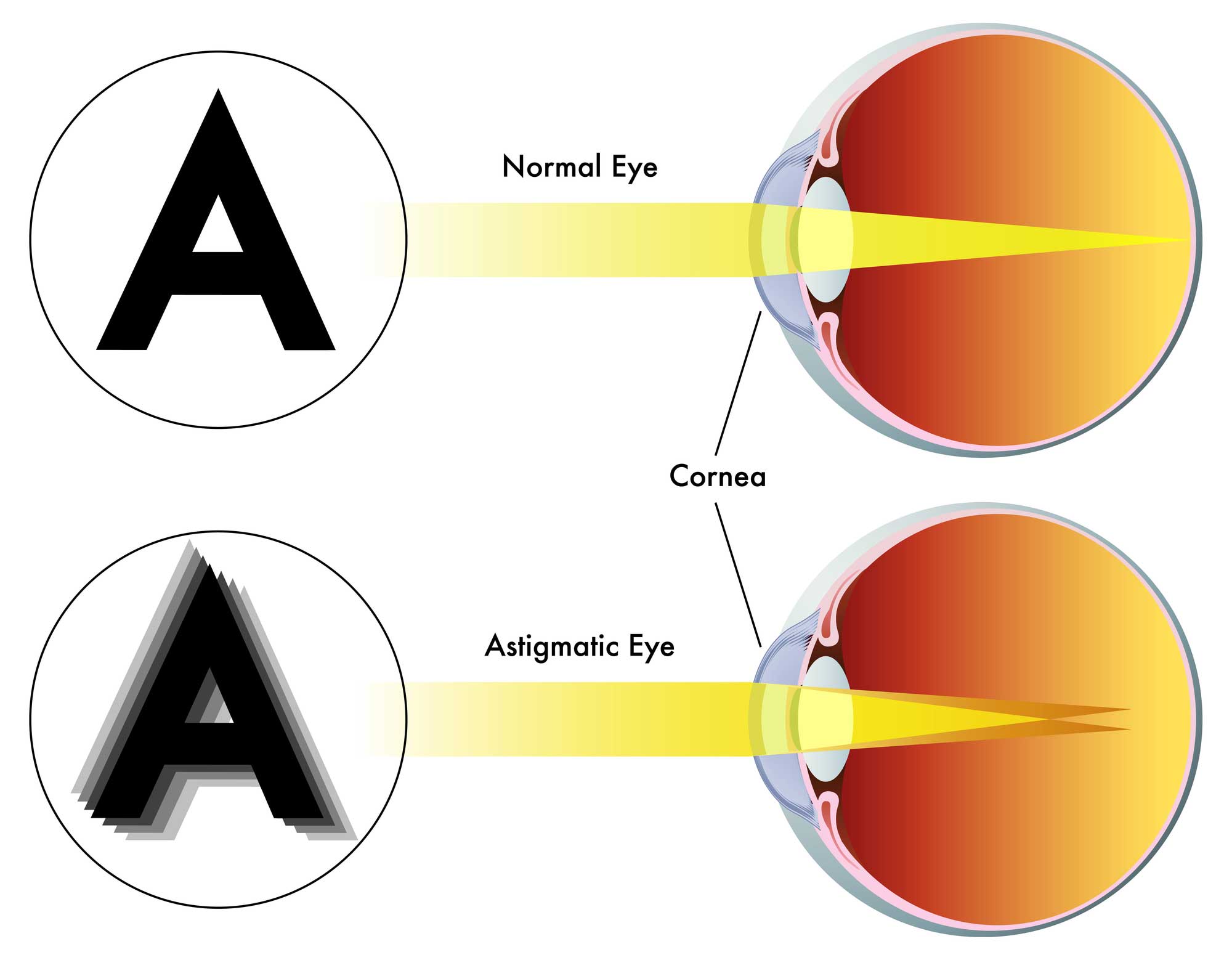If you’ve been diagnosed with astigmatism, you’re not alone. According to the American Optometric Association, most people have some degree of astigmatism. Astigmatism is an irregular curvature of the eye’s cornea or lens that disrupts the refraction of light rays. A healthy eye should have a round shape similar to a basketball, while an eye with astigmatism has a shape more like a football. Slight astigmatism usually doesn’t affect your vision, but in more severe cases you might experience blurred or distorted vision and need corrective lenses or surgery. So what causes astigmatism?
Chances are, it’s nothing you’ve done, so be wary of anyone who tries to convince you that it’s because you sit too close to the TV or read in dim light for too long. We’ve broken down two of the common causes of astigmatism so you can better understand the condition.
What Causes Astigmatism?
Genetics
As it turns out, you can most likely add astigmatism to the list of unpleasant traits your parents can pass on to you. In one study, researchers discovered that a chromosome in the VAX2 gene might be the root cause of hereditary astigmatism. VAX2 plays an important role in the development of the axis of the eye.
Corneal Scarring
Astigmatism can also be caused by an eye injury, surgery, or disease that leaves a corneal scar behind. According to a study by the Sydney Refractive Surgery Centre, scarring may follow refractive surgery, “causing irregular astigmatism and loss of visual acuity.” Another cause of corneal scarring could be an eye injury or keratoconus, a disease that causes the cornea to thin over time.
Symptoms of Astigmatism
Since astigmatism is common, it is perfectly normal to wonder whether or not you could have the condition. The following symptoms could be a sign that you have astigmatism:
- You have blurred or distorted vision.
- Your eyes feel constantly strained and uncomfortable.
- You’re experiencing frequent headaches.
- You have trouble seeing when you drive at night.
- You find yourself squinting often to see street signs or even words in books.
When to Visit an Optometrist
Don’t let vision problems impact your quality of life. An optometrist should be able to determine whether or not you have astigmatism, and together you can figure out the best option to correct your vision. In rare cases, LASIK surgery can fix astigmatism, but keep in mind that there can be long-term complications from LASIK such as dry eye syndrome. Usually a properly prescribed pair of contacts or glasses can correct the problem.
Keep in mind that children can also develop astigmatism. Your child might not realize that his or her vision is blurry, so if you notice your child squinting or complaining of headaches, it is a good idea to make an appointment for an eye exam.
_____
Now that you know more about what causes astigmatism, are you ready to get tested? If you live near southwest Missouri, contact Heffington’s. Since 1975, the Heffington family has been assisting the Springfield community with top-quality eye care and affordable eyeglasses and contacts. One of the unique features of our family-owned business is that we manufacture lenses at our own laboratory, giving us total control over the service and pricing, and we’re happy to pass our savings on to you. To learn more about our products and services, please get in touch with us online, send an email to asktheexperts@heffingtons.com, or give us a call at 417-869-3937 (Optiland location) or 417-882-3937 (House of Vision location). We look forward to hearing from you!

